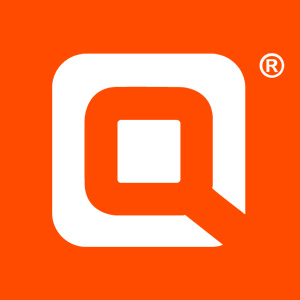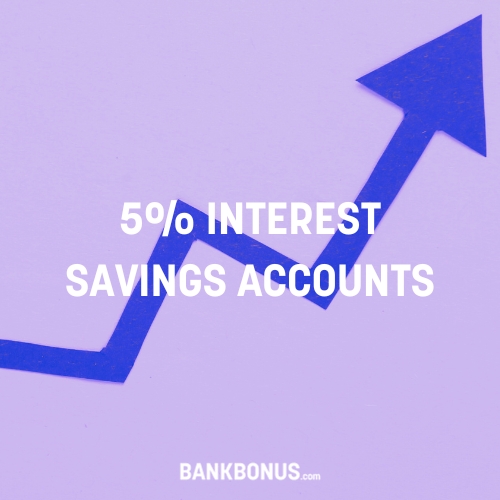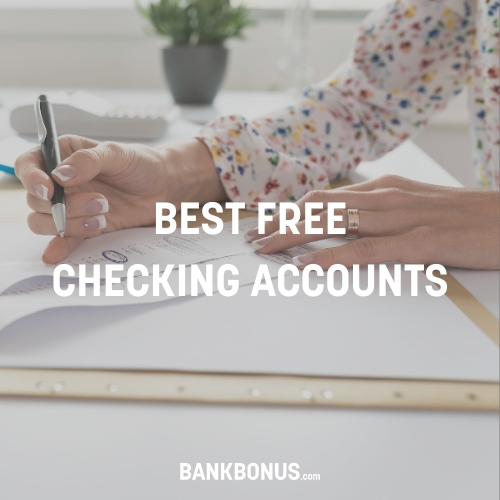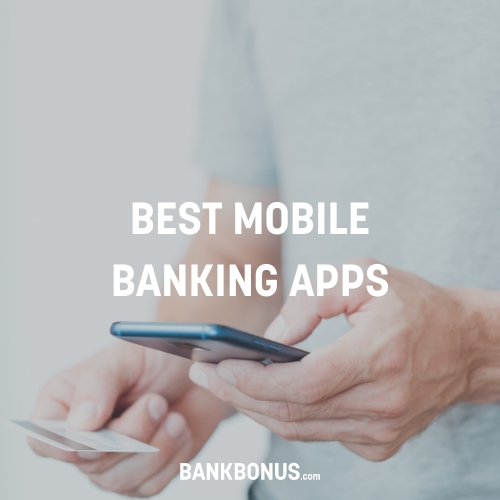Checking accounts are one of the most basic types of bank accounts, offering access to your money without restrictions on the number of withdrawals you can make.
Different people look for various features when opening a new checking account. For example, a business owner will have different banking needs than a student.
As a result, banks offer different types of checking accounts, including personal, business, and student accounts, among others. Keep reading to learn how to find the best checking accounts for 2024.
9 Best Checking Accounts
Here are the best checking accounts in different categories:
- Discover® Bank: Best Personal Checking Account
- Capital One 360: Best Free Checking Account
- NBKC: Best for Spending & Saving
- Axos: Best Account for High Balances
- Chime: Best Online Checking Account
- LendingClub: Best for Cashback & Interest Earnings
- Ally: Best Interest-Bearing Checking Account
- Quontic: Best for Debit Card Users
- EverBank: Best for ATM Reimbursements
1. Discover® Bank 
Best: Personal Checking Account
- APY: n/a
- Offers bonus: No
- Monthly fee: None
- Minimum deposit: $0
A personal checking account is useful for almost anyone who makes or manages money. Unlike savings accounts, they offer the ability to make unlimited transfers and withdrawals, making them ideal for making payments and everyday purchases.
The Discover® Cashback Debit Checking account offers cash back for purchases done using the account’s debit card. The cashback stands at 1% of eligible purchases of up to $3,000 monthly. This means you can earn up to $30 per month or up to $360 annually! (see website for details)
Withdrawals from the bank’s network, which includes over 60,000 ATMs, are free. You can use the bank’s ATM locator to find the ATMs nearest to you by entering your ZIP code. Discover also doesn’t charge any fees for using Zelle, allowing you to pay other people in minutes.
The accompanying mobile banking app makes it easy to manage your account, allowing you to freeze the account debit card easily, locate fee-free ATMs and deposit checks, among other things. You can use touch or Face ID to log in to keep your account secure while making access convenient.
If you use your debit card often, you can earn cash back with your Discover debit card, earning up to $30 monthly, making this a great checking account despite it not earning interest.
2. Capital One 360 
Best: Free Checking Account
- APY: 0.10%
- Offers bonus: Yes
- Monthly fee: $0
- Minimum deposit: $0
Capital One’s 360 Checking account is an online checking account with no monthly service fee and no minimum balance requirements.
The account can be opened online or by visiting one of the bank’s locations. If you intend to open the account in person, checking which locations are open first is best.
The account is insured by the FDIC and includes fraud coverage to keep you as safe as possible. Withdrawals from the bank’s ATM network, which includes over 70,000 ATMs, are free of charge.
This means that withdrawing money from Capital One and Allpoint ATMs is free. Capital One also won’t charge you for using an out-of-network ATM, but operator fees may still apply.
Regarding overdrafts, the bank offers three options: auto-decline and savings transfers are free of charge. They also offer a no-fee overdraft option. This option allows Capital One to approve transactions that go above your balance, up to their discretion.
However, you must promptly deposit the funds. If you don’t deposit them by the next business day, they will not likely approve your next overdraft.
Capital One has no fees, and if you live in a state with branches, you can have hybrid banking or the best of both worlds: user-friendly online banking and in-person support when needed.
Next Steps:
3. NBKC Everything Account 
Best For: Spending and Saving
- APY: 1.50%
- Offers bonus: No
- Monthly fee: $0
- Minimum deposit: $0
The NBKC checking account is a one-stop shop for all your financing needs. You can spend, save, and track all with the same account.
The NBKC checking account includes a debit card attached to the MoneyPass® network, which includes 37,000 fee-free ATMs. You can set up auto-pay for bills, and track your goals with a real-time snapshot of your accounts.
Within your NBKC checking account, you can set up savings goals and monitor your progress, all while earning competitive interest rates.
NBKC will reimburse up to $12 a month in non-network ATM fees and provide 24/7 access to your funds via mobile banking.
If you want an account that does everything, including helps with savings goals, check out the NBKC Everything account that is checking and savings all in one.
Next Steps:
4. Axos Rewards Checking 
Best For: High Balance Accounts
- APY: Up to 3.30%
- Offers bonus: Yes
- Monthly fee: $0
- Minimum deposit: $50
Axos Rewards has no fees, no minimum balance requirements, and unlimited ATM reimbursements, all while paying interest! It’s almost unheard of on most checking accounts to earn 3.3%.
The account starts with a 0.70% APY if you set up direct deposit and use the Axos free Personal Finance Manager. Then, if you add an Axos loan payment and investment account, they’ll pay an additional 2.6% APY.
You could also qualify for the base APY by making ten transactions with your debit card if you don’t want to use the Personal Finance Manager.
With Axos, you can sync all financial information into one dashboard, making it easy to see your finances quickly. You can also talk to a virtual finance assistant 24/7, auto-pay bills, and transfer money to friends and family for free.
If you carry a high balance in your checking account, you might as well earn interest on it. Axos increases your APY if you have Axos investment or loan accounts, increasing your earnings.
Next Steps:
5. Chime 
Best: Online Checking Account
- APY: Up to 2.00% with a linked savings account
- Offers bonus: Yes
- Monthly fee: $0
- Minimum deposit: $0
Chime®¹ offers an online checking account that promises to have your back. Notable features such as SpotMe® ², which will spot you up to $200 on your debit card purchases when overdrawing your account, can be very helpful on a bad month. The account also promises to get your paycheck up to 2 days earlier³.
The account also includes a Visa debit card, Roundups⁴ to help you save money, and compatibility with Apple Pay and Google Pay, among other features. You also get access to over 60,000 fee-free ATMs, which include MoneyPass, Allpoint, and Visa Plus Alliance ATMs.
There are no monthly fees and no minimum balance requirements either. You can open the account online by visiting Chime’s website. The whole process takes less than 2 minutes and will not impact your credit score.
With early access to direct deposit and overdraft protection that spots you up to $200 (if you qualify), Chime has your back during tougher times. This no-fee account is 100% online and reliable.
Next Steps:
6. LendingClub Rewards Checking 
Best For: Cashback and Interest Earnings
- APY: 0.10% (with at least $2,500)
- Offers bonus: No
- Monthly fee: $0
- Minimum deposit: $0 ($2,500 to earn interest)
LendingClub offers a checking account that earns interest and pays cash back on debit card purchases. You can access your direct deposit funds early and have 24/7 access to your account online.
To earn interest, you must have a balance of $2,500, and you can earn unlimited cash back on qualified purchases made with your debit card. They offer reimbursements on all ATM fees, and no overdraft, wire, or monthly maintenance fees.
Add your debit card to your mobile wallet, including Apple Pay®, Google Pay™, or Samsung Pay, for even easier use of your debit card. LendingClub accounts are FDIC-insured, and they provide human support should you need more than what the digital app offers.
If you keep a high balance and use your debit card often, LendingClub offers the best of both worlds with cashback and interest earnings on balances over $2,500.
Next Steps:
7. Ally Spending Account 
Best: Interest-Bearing Checking Account
- APY: 0.25%
- Offers bonus: Yes
- Monthly fee: $0
- Minimum deposit: $0
Ally offers an interest-bearing checking account with an APY that ranges from 0.10% to 0.25%. This makes this account something of a high-yield checking account. You’ll earn the lower tier APY if your balance is less than $15.00, while balances over this amount earn the full 0.25% rate.
There is no minimum deposit requirement to open the account and no monthly fees. You get access to fee-free withdrawals from Allpoint ATMs. Ally also reimburses up to $10 in out-of-network ATM fees every statement cycle, so there is no need to worry about using network ATMs now and then.
On top of ATM reimbursements, you also get debit card controls so that you’re always in charge of how money is spent. Ally also offers spending buckets, which are like digital envelopes for things like rent, groceries, or utilities.. This makes budgeting easier and ensures you don’t overspend in certain categories.
Earn interest without worrying about monthly fees or minimum balances. As long as your balance exceeds $15, you’ll earn a hefty 0.25% on your checking account with Ally.
Next Steps:
8. Quontic High-Interest Checking 
Best For: Debit Card Users
- APY: Up to 1.10%
- Offers bonus: No
- Monthly fee: $0
- Minimum deposit: $100
Quontic is an online bank that provides a human touch. The APY is something next to unheard of for checking accounts, and there’s no minimum balance to earn it.
Next to the high APY for debit card users, the ATM network is the next most impressive thing about this bank. Quontic is part of the Allpoint®, MoneyPass®, SUM®, and certain Citibank® locations in retail stores for a total of 90,000 fee-free ATMs.
You bank 100% online, but Quontic offers access to human support when needed. They also offer a unique Quontic Pay Ring that is a wearable pay accessory, allowing you to pay without your card present.
With no monthly fees and FDIC insurance, Quontic offers many ways to earn and keep more money in your pocket.
Quontic Bank pays an exceptional APY if you use your debit card at least ten times monthly. With no monthly maintenance fees and access to 90,000 fee-free ATMs, it’s hard to beat.
Next Steps:
9. EverBank YieldPledge Checking 
Best For: ATM Reimbursements
- APY: 0.25%
- Offers bonus: Yes
- Monthly fee: $0
- Minimum deposit: $100
If you’re looking for a checking account that pays interest on any balance, you found it with EverBank. They have 80,000 fee-free ATMs nationwide to make it easy to access your funds, along with a user-friendly TIAA mobile app.
While you can’t deposit cash, they offer many other ways to make deposits, including mobile deposits, wires, and mailing in a check. You can also set up direct deposits or external transfers from another bank account.
EverBank reimburses up to $15 a month in ATM fees, and doesn’t charge any fees if you use one within their network. They offer online bill pay and access to Zelle for easy and free transfers, and the account is FDIC-insured.
Earn interest on any balance with EverBank and have access to a large ATM network and up to $15 in ATM reimbursements monthly.
Next Steps:
What Does a Good Checking Account Offer?
Understanding your financial needs and requirements is important before choosing a checking account.
People tend to value and appreciate different things, but several things can make a checking account great for anyone. These may include low or no fees, cashback and other offers, insurance, mobile account access, an extensive ATM network, and user-friendly account management.
Many checking accounts also offer debit cards, check writing, bank transfers, and other payment options such as Zelle. Although uncommon, you can also find interest-bearing checking accounts with relatively high-interest rates.
Let’s look at each of these in more depth.
Low Fees
Many checking accounts charge fees for different things, including monthly maintenance fees, NSF (insufficient funds), overdraft fees, and fees for checks and debit card replacement. However, some checking accounts are free, while others may offer reduced fees or waivers.
One thing that you might want to look for is overdraft protection. Some banks offer different ways to help you avoid overdrafts, from free declines to automatic transfers from your savings account, helping you avoid checking account fees.
Mobile Account Access
The ability to carry out common banking tasks from your phone has become widespread. Online banks tend to offer stronger apps than what traditional banks and credit unions offer. Even so, brick-and-mortar financial institutions have been upping their game and offering mobile apps that are as good as those offered by online banks.
The recent closures of several bank branches worldwide have shown how beneficial a good mobile banking app can be. Online banking is also essential as this can help you bank in more comfort from a computer at your home or office.
Mobile app features such as the ability to set up direct deposit, mobile check deposit, view account balance, and set up alerts are some of the most important features of mobile banking.
Cashback and Other Offers
To attract new customers, many banks offer welcome bonuses and cashback offers on purchases made on a debit or credit card linked to the checking account. I’d never say no to a cashback debit card because offers like that can help you get a respectable sum of cash over time.
However, pay attention to the terms and conditions. Meeting these T&Cs is important to get the money, so ensure you can meet them before counting the money.
ATM Network
Checking accounts are used to settle bills and pay for everyday things. Sometimes, cash can be crucial in affecting those payments, so a healthy network of ATMs is important. Many banks offer access to thousands of fee-free ATMs, with some banks refunding fees incurred when using out-of-network ATMs.
It might be worth your time to check which bank has ATMs in the areas you visit. Remember that some banks partner with other ATM networks, such as AllPoint and 7-Eleven, to offer fee-free withdrawals from these locations.
Account Management
Managing your account is important. From setting up transfers to your savings account to depositing checks through your phone – friendly account features can make managing your money easier, which can help you stay on top of things with less effort.
FDIC or NCUA Insurance
Checking accounts generally provide a secure way to bank. The money is not invested in speculative markets such as the stock or forex markets, so there is no chance of the money disappearing. Even so, history has shown us that even the biggest banks and credit unions can fail and end up bankrupt, which is why NCUA or FDIC insurance is very important.
The FDIC (Federal Deposit Insurance Corporation) insures bank accounts, usually up to $250,000, while the NCUA (National Credit Union Association) insures credit union accounts, usually up to the same amount.
While most banks and credit unions are FDIC-insured, double-checking will only take a minute of your time and help you avoid potential issues and troubles down the line.
Interest
Interest-bearing checking accounts are hard to come by. This is because interest is usually earned on savings accounts, where money accumulates over a long period.
Even so, some banks have started paying interest on the money their customers hold in their checking accounts – though it won’t be as high as other types of accounts offer.
In most cases, interest is listed as APY – Annual Percentage Yield. This means they pay compound interest, usually compounded daily and paid out monthly. Using this method of earning interest, even if the money doesn’t stay in the account for very long, you’ll still get some interest paid out on it, even if it’s not much.
To help you understand how much money you’ll earn, try figuring out what daily balance you expect to keep in your checking account, and then use an online APY calculator to get a rough idea.
Pros and Cons
Checking accounts are a necessity to pay bills, transfer funds, and have money to spend. But like any bank account, there are pros and cons to consider.
Pros
- Accessibility: Most banks provide easy access to checking account funds via a debit card, paper checks, Zelle, ATM access, and transfers
- Direct deposit: Direct deposit eliminates the delay in getting paid, allowing you early access to your funds as soon as two days early with some banks, and you save a trip to the bank to make a deposit
- Debit card: You can use your linked debit card to access cash at ATMs, pay bills, shop online or in-person without the need to carry cash
- FDIC insurance: All banks in this list are FDIC-insured, which means your money is protected up to $250,000 per depositor
- Interest earnings: Some banks pay interest on checking accounts; while it may not be high, a little something is better than nothing
- Track spending: Online account access makes it easy to check your account balances, track spending, and create budgets in real time versus waiting for a monthly statement
Cons
- Not all accounts pay interest: It’s the norm NOT to earn interest on checking accounts, so always read the fine print to see if the account pays interest and if you must carry a specific balance
- Cash deposits may be difficult: Not all online banks offer cash deposits, so you may have to deposit cash in a brick-and-mortar bank account and transfer the funds electronically
- Fees: Some checking accounts charge fees, especially if you don’t meet the minimum balance requirement
Checking Accounts vs. Savings Accounts
You may find checking and savings accounts at the same bank, but they have different purposes.
A checking account is meant for everyday spending. There isn’t a limit on the number of transactions you can do or how many times you can withdraw money. There may be a limit on ATM withdrawals, but you can spend what’s in your account when spending.
Savings accounts are meant for longer-term savings. Some banks limit the number of monthly withdrawals allowed but pay higher interest rates than checking accounts.
Checking accounts provide access to funds via a debit card, online transfers such as Zelle, and ATM access. Savings accounts typically don’t have ATM access, or if they do, there is a limit on the number of transactions you can conduct monthly.
Checking Account Fees
If there’s one area to pay close attention to when looking for the best checking accounts, it’s the fees. You could find the most rewarding accounts only to discover they have high fees and deplete your earnings.
Every bank charges different fees, but some common ones include:
- Monthly maintenance fees
- Overdraft fees
- Paper check fees
- Paper statement fees
- Overdraft fees
- Foreign transaction fees
- Out-of-network ATM fees
- NSF fees
Checking Account Bonuses
Many of the best checking accounts have bonuses for new account holders. This means you could earn a few hundred dollars for free just for opening a new checking account.
At Bank Bonus, we track down the hottest promotions for you, updating them in real-time so you have the best promotions at your fingertips and can earn free money with your new bank account.
How to Open a Checking Account
Opening a checking account takes only a few minutes, and most allow you to do it online, especially banks that only operate online.
To open a checking account, you must have the following information:
- Full legal name
- Physical address
- Social Security number
- Driver’s license number (or other government-issued ID)
To open an account, you must complete an application in person or online. You must prove your identity by uploading your required documents if applying online and then fund the account by transferring funds from an external account or making a deposit in person at local banks.
Frequently Asked Questions
How many checking accounts can I have?
You can have as many checking accounts as you want, but you shouldn’t have more than you can handle. Some people have one for monthly bills and another for ‘fun spending.’ Some couples also have separate checking accounts if they split how they pay the bills. Multiple checking accounts may also be a good option for small business owners to keep their personal and business expenses/spending separate.
Are checking accounts free?
Some checking accounts are free, and those are the accounts to choose from. Banks with monthly maintenance fees should offer a way to waive the fee, such as a minimum daily balance or a minimum number of monthly debit card transactions, but there are just as many that don’t charge monthly fees and are easier to manage.
All checking accounts have some type of fee, though, such as fees for paper statements, paper checks, wire transfers, or NSF fees.
What is the best bank for a checking account?
There are many best checking accounts to choose from, the key is knowing what you need from an account. If you’re looking for an account with no fees and no minimums, Capital One 360 is a great option. However, if you want a bank that pays high-interest rates or pays cash back on debit card purchases, you may want to look at Ally or Discover.
Our Methodology
To determine the best checking accounts for 2023, we evaluated many factors including:
- APY
- Maintenance fees
- Promotions
- Minimum balance requirements
- Features
- FDIC insurance
We look at the bank’s total offering and compare it to the other checking accounts available. We believe you should be able to get rewarded for opening a new checking account, not paying fees, and having as many features as possible, including interest or cash back.
We also closely consider fees like NSF, overdraft, statement fees, and other miscellaneous fees that would add up quickly with regular account use.
[1]Chime is a financial technology company, not a bank. Banking services provided by The Bancorp Bank, N.A. or Stride Bank, N.A., Members FDIC.
[2]Chime SpotMe is an optional, no fee service that requires a single deposit of $200 or more in qualifying direct deposits to the Chime Checking Account each at least once every 34 days. All qualifying members will be allowed to overdraw their account up to $20 on debit card purchases and cash withdrawals initially, but may be later eligible for a higher limit of up to $200 or more based on member’s Chime Account history, direct deposit frequency and amount, spending activity and other risk-based factors. Your limit will be displayed to you within the Chime mobile app. You will receive notice of any changes to your limit. Your limit may change at any time, at Chime’s discretion. Although there are no overdraft fees, there may be out-of-network or third party fees associated with ATM transactions. SpotMe won’t cover non-debit card transactions, including ACH transfers, Pay Anyone transfers, or Chime Checkbook transactions. See Terms and Conditions.
[3]Early access to direct deposit funds depends on the timing of the submission of the payment file from the payer. We generally make these funds available on the day the payment file is received, which may be up to 2 days earlier than the scheduled payment date.
[4]Round Ups automatically round up debit card purchases to the nearest dollar and transfer the round up from your Chime Checking Account to your savings account.
[5]Out-of-network ATM withdrawal fees may apply except at MoneyPass ATMs in a 7-Eleven, or any Allpoint or Visa Plus Alliance ATM.





Comments are closed.
Comments are closed here.